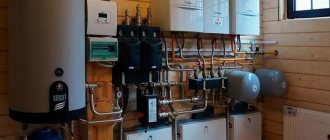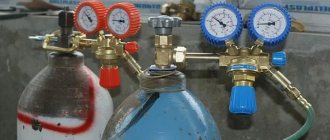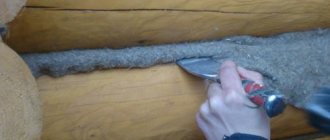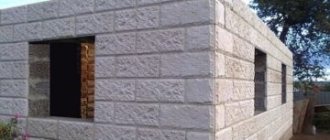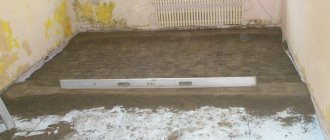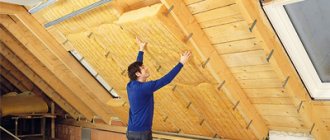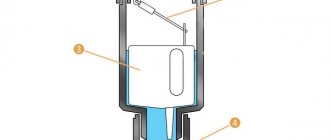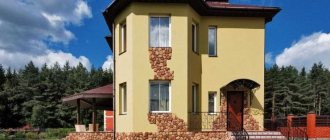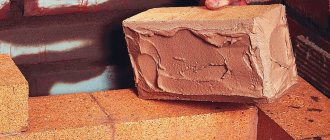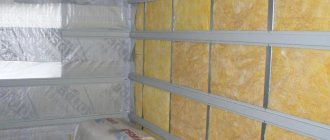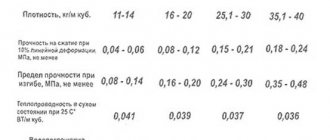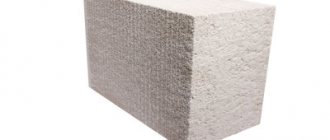As you know, the soil temperature, even on a hot summer day, is +7 degrees Celsius, and the desired water temperature is +25 degrees. A concrete pool of any type - heated or not - is characterized by very rapid heat transfer by water. Therefore, when building a concrete pool, it is necessary to build a thermal insulation layer that will inhibit the transfer of heat by water, that is, it will save both electricity and the heat of the water bath you are taking. Do you need to insulate the bottom of a concrete pool? Find out here how to insulate the bottom of a concrete in-ground pool yourself.
Insulation of the pool can be carried out during the preparation of the concrete pour. To do this, a small amount of penetrating substance is added to the solution, which will give the concrete the necessary thermal insulation qualities.
How to warm the water in the pool? Personal experience.
Anyone who has a swimming pool on their property is familiar with the problem of heating water.
Summer is often cold, even an average pool with 10 cubic meters of water does not warm up, and it is not comfortable to swim. Nobody even dreams about swimming in the fall. In September, everyone already drains the water. I’ll get ahead of myself - and we’re swimming)) It’s -1 outside. The water in the pool is +35. Class!
So the first stage in the fight against the cold was the greenhouse. Dimensions 5 by 6. The pool fit perfectly. And there is still room for changing clothes and pumps. But alas. By mid-September the water became cold.
I connected a 3 kW electric heater from Bestway. During the week of operation, the water did not warm up at all. The device is complete crap. Threw away.
I started googling and found the Vesnina oven. Heating water with wood. I bought a stove. I made a boiler room for it so it wouldn’t rust. I bought firewood. And he started drowning))
So, after heating for one day, I was happy to discover that the ice water became +26. Already a victory! After the second day of heating, the water became like in a jacuzzi +33. And this is already a complete victory!)) By the way, it is advisable to heat it with birch logs. If you burn any garbage, the effect is worse.
Article on the topic: Who treats varicose veins with a swimming pool, reviews
To keep the greenhouse warm, I hung up infrared lights. Stable +20. Although during the day if it’s sunny it’s +40 even without them. Due to the greenhouse itself.
Total costs. Greenhouse farmer 70t. Stove 10t. Infrared cameras 2 pieces 6t. Firewood 5t. For boiler room material 5t. All sorts of wires and small items - 3 thousand. About 100 thousand in total.
Are these costs worth it? A friend says you can go to the city pool for the rest of your life for this money. Yes you can, I don’t argue.
But the pleasure and buzz that your own pool gives you, when you are lying in hot water and there is snow outside the window - no amount of money can replace it! So I decided for myself, it’s worth it!))
In the fight against the cold, I burned a bunch of wood until I realized that the problem was not heating, but heat loss. You heat it during the day, but everything cools down overnight... we had to insulate the pool itself. I bought TechnoNIKOL 30mm 12 meters and insulated it all around. I also covered the foam plastic with film in a circle to remove moisture. I bought another awning for the top of the pool. Total two awnings on top, extra. costs +2500 rub.
The insulation solved all the problems. After heating the water to 38 degrees, it lasts for 2-3 days without any heating. After 2 days, the water temperature is +30 degrees. At the same time, it’s -5 outside and +9 in the greenhouse.
Content:
- 1. What are inflatable pools?
- 2. What is a frame pool?
- 3. How to choose a model by volume?
- 4. Which manufacturers' products should I choose?
How to choose a frame or inflatable pool that is best suited for you? After all, it must be safe, comfortable for children and adults, and suitable in volume. If, for example, the reservoir is small, the whole family will have to line up to swim. Too deep can be dangerous for children who have not yet learned to swim. To make the right choice, it is necessary to take into account a number of important parameters: material of manufacture and shape, installation features, size, equipment. There are many criteria. To understand them, you should study each in detail. We will help you with this. Let's start by considering the types of products.
What are inflatable pools?
Do you want an inexpensive artificial pond where children or 2-3 adults can swim?
Then an inflatable model is what you need. This is a summer open structure consisting of a bottom with walls (sides). They take shape by forcing air inside. To install such a structure, it is enough to choose a place near the house and pump it up with a special pump, which will take an average of 15 minutes. For some models, only the sides are inflated (for example, Intex Bubbles), while for others, the bottom and walls are inflated at the same time (such as the 114x25 Intex inflatable pool). The pump can be included in the kit or purchased separately. Inflatable pools have their advantages.
- Reliable and safe material. Typically this is polyvinyl chloride (PVC), a thermoplastic polymer of vinyl chloride. It does not let water through. It has an excellent tensile strength: you can pour a large amount of water into it - the bottom and sides will withstand it. Tolerates temperatures up to +65 °C, does not melt when heated in the sun. It does not deform due to accidental contact with acids, alkalis, gasoline, salts - you can wash it with any household cleaning products. PVC is environmentally friendly and safe for both adults and children; it does not irritate the skin.
- Convenient shape. Inflatable pools do not have a rigid frame, the walls are soft, you can lean on them like pillows. Swimming in such a “reservoir” is safe for children - they will not get bruises if they accidentally hit the sides. There are no sharp corners: models usually have a round or oval shape. In such a pool, kids can not only splash around, but also jump a little, like on a trampoline, if the bottom is inflatable. No bruises, abrasions or bruises!
- Thoughtful design. Children's models have a special coloring with bright designs - dolphins, fish, fairy-tale characters. For example, the Intex pool 157x157x122 cm is made in the form of a house with a roof. The baby can sit in it all day long without getting a headache or sunburn. Some products include swimming and play accessories. With them, kids will not be afraid of water and will learn to feel confident in it. For example, the Intex Rybka model includes a children's ball and a swimming ring.
- Affordable price. The cost varies from 250 rubles for a small model for children to 10 thousand rubles for a design designed for bathing up to 10 people at the same time, including adults.
But inflatable pools also have disadvantages . As a rule, they have one or two layers of polyvinyl chloride. The walls can be easily damaged by a sharp object, or pets can touch them with their claws - the structure will begin to deflate. To continue using the pool, you will have to seal the cut. In addition, such models rarely provide a water purification system; it is sometimes found only in large-volume products. In the rest, you need to completely drain the water each time and add new water. You can buy a filtration system separately, but the costs are comparable to the price of the pool itself.
What is a frame pool?
An inflatable structure is not suitable for everyone due to its low strength, small capacity and seasonality - such a product cannot be left on the site in winter. And if you like to swim freely and want the product to serve for many years, a frame pool is for you. It looks like a collapsible frame on which a polyvinyl chloride coating (PVC film) is stretched. Additional elements of the structure can be an awning for a canopy, a ladder, flooring, covers - they are included in the kit or can be ordered separately. This design has a number of advantages over simple inflatable models. Let's tell you more about them.
Why is thermal insulation necessary?
Thermal insulation of a frame pool in a country house or country house is especially important if the structure is buried in the ground.
Typically, the depth is up to 2 m. It must be taken into account that even in the hottest period, the soil temperature at such a depth is not higher than +11° C.
The temperature difference between the surface of the frame at night and during the day can reach 10°C . This affects both heating and heat retention in the lower part of the structure. First of all, the wear-resistant qualities of the frame deteriorate.
Even if on a hot day the top layer quickly heats up under the sun's rays, the water will also cool down quickly due to the cooled lower part of the pool.
If you plan to cool the water less quickly and to enjoy swimming longer, it is recommended to lay a layer of insulation.
Examples
A frame pool on a base made of colored paving slabs against a green lawn looks very aesthetically pleasing. This cushion has an elevation above the ground of about 5 cm and is equipped with a border to maintain its shape and prevent the lawn from growing in the sand of the base.
In addition, the border adds convenience when mowing the lawn.
A dark-colored frame tank, located on a sand cushion decorated with light decorative stones, stands out against their background, and plant decorations make the whole composition not just a pool, but a thoughtful part of landscape design.
The wooden base for a frame pool can rest on metal pillars buried in the ground. The corners of the timber must necessarily lie in the middle of these pillars. The cross-section of the timber and the thickness of the boards are selected based on the size of the pool. The larger it is, the thicker the boards are needed.
How to make a wooden deck for a frame pool, see below.
Basic rules of insulation
Before you begin insulating a frame pool, you need to take into account the nuances of the procedure:
- The surface on which the structure is installed must be either cemented or with tightly compacted soil.
- The insulation procedure is carried out when installing the structure in a permanent place. The sides of the pool can be insulated later.
- Lay the insulation material so that the number of joints is minimal. If there are any, seal them.
Article on the topic: I once went to the pool
Mosaic
This material is often used in sanatoriums, hotels and other places aimed at high traffic levels of visitors. The mosaic looks the most interesting. Thanks to this material, you can create entire paintings.
The installation of this material is in many ways similar to tiles, except that the facing elements are much smaller. Their installation will take many times longer, especially if you plan to create an image. This is a labor-intensive process that you can’t always do yourself. On the other hand, mosaic (especially glass) does not absorb moisture at all and has the longest service life. It is easy to clean and does not form mold. If you skillfully combine this finishing with other decorative elements, you will get a luxurious pool.
But you will have to pay a lot for such beauty. Mosaic is more expensive than the materials described above. Most often, you also have to pay for the services of a craftsman who will lay out the panel according to your sketch. To reduce the cost of such a project, you can also use ceramic mosaic or even combine it with tiles.
Recessed or non-recessed tank
To properly insulate an in-ground pool, it must be properly deepened.
To do this you need:
- Measure the perimeter of the pool and dig a pit that will be 1 m wider than the perimeter. The depth of the pit should be no more than 2/3 of the height of the frame pool.
- Make sure that the soil or sand at the bottom of the pit is thoroughly compacted. The best option would be to concrete the surface. Before laying the insulation, make sure that the pit is perfectly level.
Only after such measures have been carried out can you proceed to the procedure for insulating the pool structure. If the pool is buried in the ground, it is additionally recommended to insulate not only the bottom, but also the sides of the pit.
How to choose material?
When choosing a material, you need to take into account that it must meet certain requirements:
- Perform not only heat-insulating, but also waterproof function.
- Withstand high loads (including being resistant to mechanical damage and withstanding low temperatures in winter).
- A good effect will be achieved by using a material that leaves a minimum number of seams and places for cold penetration.
The best options for insulation would be the following materials:
- Styrofoam;
- thermal insulation membranes;
- sprayed polyurethane foam.
It is not recommended to use materials as insulation that can damage the structure or those where there are many joints left after installation.
Styrofoam
Sheets of foamed polymer are widely used as insulation for floors, walls, and ceilings of various buildings, including baths and saunas.
Sheets of foamed polymer are widely used as insulation for floors, walls, and ceilings of various buildings, including baths and saunas. These are lightweight materials consisting of cells filled with air. Due to their low weight, they can be used as insulation for a frame bath. The sheets hold their shape well and additionally provide sound insulation and wind protection to the structure.
The advantages of foam plastics are obvious: low thermal conductivity, ease of mechanical processing; ease of installation; acceptable price. If you purchase insulation from a trusted manufacturer, you can be sure of its environmental safety. Low-quality slabs may contain phenol-formaldehyde resins as a binder. These are substances that decompose when heated to form carcinogens.
The disadvantages include:
- Fragility. During installation, the sheets often break. The same thing happens with temperature changes in the log house.
- Flammability. Despite all the impregnation, the foam burns well, emitting a large amount of toxic smoke.
- The need to mount a frame. It is difficult to fix the slabs on a log wall. For reliable fastening, a lath is required.
- A large number of joints. It will not be possible to obtain a monolithic thermal insulation layer by folding it from separate sheets. There are many seams, and each of them needs additional insulation. If polystyrene foam is used as insulation for a bathhouse on the ceiling, then each joint can become a gateway for heat leakage. And cold bridges form in the walls.
- The need for additional vapor barrier. Foam plastics themselves practically do not absorb moisture; tightness is necessary to preserve wooden structures. Due to the temperature difference between the thermal insulation layer and the wall, condensation will form. Water accelerates putrefactive processes in wood and often causes an unpleasant odor in the bathhouse.
- Attractive to mice. It is quite possible that over time, many cozy holes will appear in the thickness of the insulation.
It is also worth noting that polystyrene foam can only be used as external insulation for walls. The use of this material inside a bathhouse is dangerous to human life and health.
How to insulate: step-by-step instructions
Several material options can be used as insulation for a frame pool. The specifics of insulation depend on the material used and whether the frame will be buried in the ground or not.
Foam plastic
This material is best used for insulating pools of regular shapes without bends or surfaces of non-standard shapes. Foam plastic is one of the most popular materials for insulating not only swimming pools, but also foundations. It is considered a mechanically strong product that can withstand even minimal ground displacements.
Stages:
- Clearly mark the contours of the place where the pool will be located (if it is not buried). It is desirable that the sand or soil underneath is not loose.
- Place a backing in the place where the pool structure will stand. If its edges protrude slightly beyond the contour, it is better to bend the material inward. It is not recommended to trim such edges.
- Lay out sheets of foam plastic. Make sure that the edges also match the contour of the pool area. The sheets should fit tightly to each other. It is better to trim off excess edges with a stationery knife.
- After laying the material, glue all foam plastic seams so that there are no gaps and they are immovable.
Article on the topic: Where is there a swimming pool in Poltava
The surface is ready for installation of the pool structure.
It should be taken into account that the foam insulation layer may sag a little over time.
Roll material
To carry out the insulation procedure, you need to follow the rules:
If the perimeter where the structure will stand is not concreted, you need to pour a layer of sand (or dig the soil 2 bayonets deep) and compact it thoroughly.
It is advisable to water the surface again, compact it and level it. To avoid shrinkage, such activities should be carried out over 2-3 days, the soil should be well compacted before laying the insulation and installing the pool.
- Place roll insulation on top. Do this so that there are no gaps or waves on the surface. After thorough installation, all joints should be covered with a special tape for sealing. The insulation must be placed under the entire surface of the structure.
- Additionally, roll insulation can be used as a lining on the sides, especially if the pool has a recessed design.
- If the structure will simply stand on the ground, then you first need to outline the dimensions of the bottom and cover it with a layer of sand or soil. It is better to add them several times, giving each time time for shrinkage of 2-3 days. After this, the outlined area is covered with a substrate (if desired and financially possible, two layers can be laid).
- If the structure is deepened into the ground, the bottom of the pit is carefully leveled with sand or soil, followed by shrinkage of the material over several days. When installing an in-ground pool, the best option would be to concrete the surface. In this case, the substrate can be laid not only on the bottom of the pit, but also used as a gasket on the sides of the frame structure. It can serve as insulation and protect the sides from damage.
Underlay under laminate or old linoleum
Such material will not only maintain a comfortable water temperature (serves as a heat insulator for the bowl), but will also preserve the appearance of the surface. When choosing the amount of substrate, be sure to focus on the area of the pool bottom and its shape.
Features of laying the substrate or old linoleum depend on whether the pool will be buried or not:
Wooden flooring
- When installing boards, you must maintain a distance of 50 cm. Place supports every 75 cm.
- If wood flooring is laid on concrete, it is better to take care of waterproofing.
- Calculate the dimensions of the bottom of the frame and the dimensions of the boards so that the latter protrude no more than 25 cm under the pool. Before laying the boards, it is advisable to treat them with an antiseptic.
Article on the topic: Fitness bracelet xiaomi mi band 2, can you swim in the pool?
When laying any type of insulation, it is recommended to lay an additional substrate underneath in the form of linoleum, polyethylene or thick tarpaulin.
Work progress
Depending on the design and material of the pool bowl, insulation comes in different types.
Plastic bowl
The procedure is as follows:
- The area for the pit is being prepared. It is necessary to measure and dig a hole that will be 1 m wider than the required dimensions of the bowl and 0.5 m deeper.
- Sand and crushed stone are filled in. The thickness of each layer is 20-30 cm. The surface is leveled using a building level.
- A grid of reinforcement is laid to stiffen the base.
- Concrete is poured for the base of the bowl.
- After it dries, the insulation is laid. The material must be laid carefully, all joints must be lubricated with mastic or sealed with tape. It should be taken into account that water will loosen the bowl, and slight shifts in the insulation are possible.
- At the end, installation work is carried out to install the pool bowl.
Concrete bowl
The insulation of the bottom of a concrete structure must be approached thoroughly.
If, after completing the installation of the pool, problems are discovered in the bottom insulation, then they cannot be corrected.
Therefore, you should do everything right right away.
The procedure has several stages:
- Site preparation.
Depending on the size and shape of the future structure, you need to mark the area. For round pools, markings are done using a string tied to a peg in the center. For capsule pools, you need to make two such circles and connect them with straight lines. For ellipsoidal bowls, three circles are drawn - a large one in the center and two small ones on diametrically opposite sides. The marking area should be several tens of centimeters larger than the width of the pool for future walls. - A hole for the pool is dug to the required depth.
- A tube is driven into the center of each marking. A radius rail is placed on the tube, which will allow you to better level the surface.
- A dry mixture is prepared from crushed stone and cement, which is poured in a layer of 5 cm. The mixture is compacted and leveled using a radius lath.
- Sand is poured on top of the dry mixture. It is compacted, topped up, and filled with a little water. The sand layer is about 5-6 cm.
- A cement screed is made and the bottom is reinforced.
- Embedded elements are installed, which are secured using anti-corrosion wire.
- The formwork is being installed.
- A concrete slab is being cast which will serve as the base for the pool.
- After drying, foam or polyethylene is laid.
- Everything is sealed, the joints are connected with mastic. The water swings the bowl in different directions. Due to the high pressure, vibrations can undock the substrate.
- The base is concreted on top, and further work is carried out to finish the concrete bowl.
Watch the video below for information on how to waterproof a concrete pool:
Frame or inflatable models
Frame and inflatable pools are not large in size or have a complex design, so insulating the bottom of their bowl will not take much time and effort. Unlike previous types, they are easy to install, and you can always replace the insulation in case of malfunctions.
To insulate these types, you must adhere to the following algorithm:
- At the first stage, it is necessary to prepare the site for the bowl. The area for future installation is marked out. The diameter of the marking should be 30-50 cm larger than the diameter of the bowl. Depending on the diameter of the pool, you need to dig a hole 15-25 cm deep. If the ground in this place has a slope, then it should be leveled immediately.
- To prevent grass growth, a film is spread over the entire area of the pit. Sand is poured onto the film for the substrate. It should be spread evenly throughout the film and leveled using a level. The thickness of the sand substrate is 5-8 cm.
- After leveling the sand, insulation is laid. For frame and inflatable pools, penoplex or polystyrene foam would be a good option. The material is laid joint to joint so that there are no gaps. The joints can be glued with tape.
- You need to lay foil-coated insulation on the insulation. If polystyrene foam or penoplex is thick, then you can choose thin thermofoil. The material is glued to the insulation using glue.
- The pool structure is placed on the substrate in accordance with all recommendations for the installation of specific models. Excess material around the bowl is trimmed off.
We recommend an article on the topic
Why is it needed, how to choose and use the right insulation for a frame pool?
The need for thermal insulation of the pool
One way to extend the life of a pool is to insulate it. There are two types: wall insulation and bottom insulation.
Pool insulation is done for two reasons:
- The temperature difference between the pool bowl and the ground, the water will cool quickly;
- The second reason follows from the first. The energy costs for heating the water in the bowl are too high.
It is necessary to insulate the pool with a material whose thermal conductivity coefficient is quite high. Because the ground temperature is about 5 degrees Celsius, and the pool temperature is 25 degrees. The difference is too great.
Construction stages
If you have experience in creating such structures or at least artificial reservoirs, building a pool from polystyrene foam blocks with your own hands will be a completely feasible task. The main stages of the construction work complex are:
- creation of a pit;
- arrangement of a drainage system;
- installation of a water drainage system;
- thermal insulation;
- bottom sealing;
- bottom reinforcement, pouring concrete;
- creating a bowl;
- Finishing work.
In addition to blocks, concrete is used to create the bowl. However, it is much easier to build a pool from polystyrene blocks. Moreover, such structures have better thermal insulation, high strength and a longer service life.
Laying blocks
So, the pit is drained, the drainage line is ready, the reinforced bottom is filled and hardens. Next, we need to lay polystyrene foam blocks around the perimeter of the bowl. The ease of connecting the blocks and the lightness of the material itself make the work quick and productive. And the precision of manufacturing materials will significantly reduce the cost of connecting components.
In order to determine the number of required rows of installation, you need to divide the depth of the pool by the height of the block (25 cm). Before installation, make sure that you leave a niche for the stairs if you planned to install one.
Each polystyrene foam block has special holes for vertical reinforcement. Thanks to this, the process of reinforcing the bowl occurs without any particular difficulties. Next, you need to fill the pool with the mixture and leave it for several days until it dries completely. Afterwards you can begin plastering the walls and finishing. Usually the pool bowl is covered with PVC film or lined with special anti-slip tiles.
Types of pools
Swimming pools come in various types, from special sports and recreational pools to stationary and stationary ones installed at the dacha.
Stationary
Such a pool cannot be moved around the site; a pit is dug under it and formwork is poured for the pool bowl. A place for drainage and water intake is arranged. But there are times when there is no water on the site with which to constantly fill the bowl. In this case, resort to the following solution. At the owner's request, a fire truck is brought in to fill the pool bowl with water. But what about water purification you ask? That's how. A skimmer cleaning system is installed, which, with proper care and proper use of water in the pool throughout the year, the water can not be changed for several years.
Stationary pool
Mobile
This type of pool costs the owner less than a stationary one and does not require year-round maintenance. Only for the summer swimming season. In addition, this type of pool can be moved by the owner to different parts of the summer cottage. In turn, there are several subtypes of mobile pools: inflatable and frame. The first one is one of the simplest. But it is easy to perforate if handled carelessly. The second type is more durable and durable. The water in it can not be changed all season long if a good filter is installed. But unfortunately, you have to face the following problem: many insects, in search of water, find your pool and often drown there. The most unpleasant thing is that wasps can fly in on a hot afternoon and interfere with your rest.
Article on the topic: When will swimming pools open in Kazakhstan?
Features of plastic pools made of polypropylene
Plastic bowls are made from polyethylene and polypropylene. There is no big difference between the materials, since it is one type of plastic. However, most manufacturers prefer polypropylene. Compared to polyethylene, the material has a lower density, which allows you to obtain a finished product with less weight. In addition, polypropylene has greater hardness, which increases abrasion resistance. At a temperature of 80 °C, polyethylene begins to soften. Polypropylene is more resistant to high temperatures. Its softening begins when heated from 140 °C.
In terms of technical characteristics, stationary pools made of polypropylene win. It should be noted that the bowl is only an insert. The base of the pool is poured from reinforced concrete. Sometimes bowls are used as frame fonts. More stiffeners are welded onto them, and when installed outdoors, the water is drained for the winter.
Thermal insulation materials for swimming pools
You cannot insulate a pool with any material you like. This will be wasted money. Because it may not be suitable and may not provide the necessary parameters. Let's figure out which material is best.
Thermal insulation membrane
The advantages of this material include:
- Mechanically strong and elastic;
- Meets all hygienic requirements;
- Very little water shedding;
- Easy to install and weld by hand;
- The welding seams are very durable and double thickened;
- Environmentally safe;
- Easy to repair;
- Can be sent for recycling.
Foam concrete
This type of material waterproofs the pool well, as it has:
- low water permeability;
- resists high pressure;
- withstands impact in aggressive water environments;
- is one of the most budget-friendly waterproofers.
Foam concrete - material for pool insulation
Styrofoam
Polystyrene foam is one of the most accessible and inexpensive types of insulation for a swimming pool, which will stop the transfer of heat from the water to the ground. Its advantages include:
- availability;
- little weight;
- environmental friendliness;
- low price;
- high thermal insulation and waterproofing properties;
- does not promote corrosion.
In addition, this material is easy to install and does not require special installations or machines.
The most popular insulation materials
The insulation for the pool must have the required parameters.
The list of the most popular materials for thermal insulation of artificial reservoirs includes:
- Thermal insulation membrane;
- Foam concrete;
- Styrofoam.
The advantages of the first heat insulator include strength and elasticity, compliance with hygienic requirements. This material has minimal water absorption and is easy to install and fix by hand welding. The seams are strong and double thickened. Thermal insulation film is environmentally friendly and repairable. If necessary, it can be recycled.
Technological features and advantages of sprayed polyurethane foam
Polyurethane foam is most effective for insulating a house or swimming pool. This is due to its cellular structure. In addition, the cells are filled with carbon dioxide. In addition, the heat transfer coefficient of this material is higher compared to other materials. In this regard, polyurethane foam is superior even to air.
Other advantages of the material:
- spraying does not leave seams through which cold could penetrate;
- spraying can be carried out on structures of various shapes, any configuration and complexity;
- simultaneous insulation and waterproofing is provided by spraying polyurethane foam;
- It is fireproof, as it goes out on its own when ignited.
How to cover a swimming pool at the dacha?
How to cover a pool: covering options
- Bubble cover
- Foam insulating covers
- Cases with fastening device (rail system)
- Pneumatic (inflatable) domes
- Sliding pavilions
- Verandas, canopies and extensions
4 Sep.
2015 Interesting materials:
Is it possible not to show documents to the police? Is it possible to issue documents at MFC online? Is it possible to send documents by mail? Is it possible to apply for correspondence? Is it possible to submit documents to the MFC at a location other than your place of registration? Is it possible to sign an agreement with a document seal? Is it possible to get a birth certificate for my documents? Is it possible to change the creation date of a document? Is it possible to print a document with a stamp? Is it possible to delaminate documents?
Insulation methods and materials
There are slight differences in the insulation of pools made of different materials. Let's take a closer look.
Plastic pool
The pool is insulated by spraying polyurethane foam. You can do this yourself by purchasing a special device. Next, the bowl is placed in the ground or placed in a specially designated room. This type of insulation helps prevent the water in the pool from cooling.
Concrete swimming pool
Insulation is carried out by spraying polyurethane foam. Here it acts as both a heat insulator and a hydro- and vapor barrier. However, insulation must be carried out not only outside, but also inside. To prevent early cooling of the water in the pool bowl. Inside the pool, the polyurethane foam is sanded, reinforced, and then cement mortar is applied. Then everything is decorated with mosaics.
Article on the topic: The pool is like a fish in Odintsovo
Spraying polyurethane foam - a method of insulating a pool
Thermal insulation of bowl and pipeline
It only makes sense to insulate the bowl and pipeline in stationary pools. Mobile models simply do not need this. The simplest option for thermal insulation of a bowl is the use of polystyrene foam. Sheets of insulation are simply laid around the concrete during pouring.
As a rule, the bottom is not insulated. The average depth of the pool is enough to prevent the water from freezing. Insulating the pool with foam plastic will also protect the structural material from moisture.
Ultimately, this will save the concrete from the freeze-thaw cycle when moisture enters. Polystyrene foam performs an additional function of moisture protection. Sometimes, in addition to polystyrene foam or instead of it, they use expanded clay backfill with a layer 20-30 cm thick.
For thermal insulation of the pipeline, it is better to use shells made of foil and basalt mineral wool. The shell has already been formed to the size of the pipe; all that remains is to insert the pipe into the insulation and seal the joint with foil tape.
You cannot immediately cover the insulation with earth, since fallen clods of dirt and stones can damage the insulating layer. Therefore, a sand cushion is always poured under the bottom of the insulation. Ideally, the pipes should also be filled with sand until the main part is hidden under its layer.
Pool insulation is an important part of the installation work. Thanks to which you can further save money on electricity, and the water in the pool bowl will always be at the same set temperature.
Features of insulation work at the initial stage
It is best to carry out thermal insulation during the preparation of concrete pouring
A swimming pool will only be built correctly if all conditions for its operation are met and reliable protection against heat loss is provided. The bowl of the pool is of particular importance in this regard. Due to the fact that it is located directly on the ground, it must be insulated with materials that have a high heat resistance coefficient. The average ground temperature is about 5-7 degrees, while the water temperature in the pool is more than 25 degrees. Taking into account the fact that heat tries to penetrate into cold areas, insulation of the pool bowl must be carried out even before installation work begins.
It is best to carry out thermal insulation during the preparation of concrete pouring. For this purpose, a small amount of penetrating substance is added to the solution. With its help, concrete will have primary thermal insulation qualities.
What to put under the pool for insulation
What to lay under a frame pool?
Frame pools are made from durable vinyl that can withstand heavy loads and is highly durable and reliable. But such a coating can easily be damaged by an ordinary stick, stone, reinforcement or glass. For this reason, manufacturers of frame pools recommend laying a substrate, building podiums and cement bases before installing them on the surface. With their help, the reservoir will not break through during use and will last a long time. We’ll talk further about what to put a frame pool on and other nuances.
What materials can the platform be made from?
Depending on your capabilities, the pool deck is made from the following materials:
- substrates made of polypropylene, geotextile, linoleum or dense film (such as reinforced) - the simplest and cheapest option;
Geotextile is a moisture-permeable and durable technical fabric used in construction - boards and a waterproof coating on them (the same linoleum or film will do) - it turns out like a podium, this is a more labor-intensive and expensive, but also more durable option;
- concrete or tiles is also a rather expensive and labor-intensive option, but it is the most durable and, as they say, will last for centuries.
Our dacha is located near the forest, in a lowland. There is a swamp nearby. No concrete pillars stay in the ground because groundwater is close. In addition, in the spring the area is flooded with melt water. Therefore, when choosing a site for a swimming pool, we settled on the simplest option: we dug a layer of turf, poured sand that was brought from the river bank, and laid linoleum. The most difficult and time-consuming part was leveling the sand using a long board and level.
Basic requirements for a substrate for a frame pool
- Due to the large mass of water, the base must be level and the flooring must be strong - during installation of the substrate, a deviation of 5 mm per 1 m is allowed. If this criterion is not taken into account, the frame and bowl may become deformed, making the pool unsuitable for use.
- The substrate must lie on a solid surface - good stability can be achieved by compacting the soil.
- The substrate should be spread in an even layer on a flat surface: without bulges, debris, tree roots, etc. Foreign objects can damage it and, under heavy load, break through the pool bowl.
Article on the topic: Is it possible to go to the pool after being vaccinated against diphtheria?
Experts do not recommend laying a backing on loose surfaces, or near buildings and trees. For a frame pool, a special area on the site should be allocated, where you and your family can comfortably swim and spend time near the pond. The absence of trees and bushes nearby will allow you to spend less time on cleaning, since leaves, sticks and fruits will not fall into the bowl.
What can be laid under a piece of pond?
Today, there are no problems with what to put under a piece of pond, since there are many different options for substrates on sale. They are easy to install, protect the bowl well from damage and last a long time. Most often, bedding is already included in the package of a piece of pond, but they can also be purchased separately. If you don’t want to overpay, you can make the backing yourself using available materials: wood, linoleum, etc.
Special substrate
Most often, users of frame pools buy ready-made special substrates, which in some models are already included in the package. They have many advantages:
- meet current quality standards;
- serve for a long time;
- prevent the bottom of the artificial pool from breaking through due to its high strength;
- correspond to the size parameters of the pool;
- easy to install and remove;
- suitable for all-season use;
- are inexpensive.
Special substrates are an ideal solution for small and medium-sized frame pools, which are assembled for the winter at the end of the season. If a piece of pond is installed on a permanent basis, it is better to give preference to more functional and aesthetic substrates made of wood, cement and decking boards. In addition to a reliable design, they make it possible to create a relaxation area next to the pool.
Linoleum
If the pool did not come with a special underlay, but you still have unused linoleum at home, you can lay it under a custom pond. Its properties are close to the required ones: strong, durable, wear-resistant. But there is one significant drawback - when wet, linoleum becomes slippery, which is dangerous. Also, such an alternative looks ugly from the outside.
Polyethylene film
A substrate of this type is well suited for small frame pools, during use of which there will not be a large load on the base. Polyethylene film as a flooring for a piece of pond has a number of significant advantages:
- It is cheap compared to other types of substrates.
- They come in different sizes, allowing you to choose the optimal length and width.
- It is highly resistant to external factors: wind, temperature changes, precipitation.
- It is very light, which gives you the opportunity to lay it yourself without resorting to the help of third parties.
- It has medium strength, which is enough to protect the pool bowl from damage during operation.
Article on the topic: At what depth to install a pool filter
A significant disadvantage of polyethylene substrates is rapid wear. With normal use, such flooring will be enough for a season, but no more. Sun rays help reduce elasticity, strength and frost resistance. If you do not plan to remove the pond for the winter, this substrate is not suitable for all-season use. You will have to remove the pool frame, replace the deck, and reinstall it every year, which is not practical.
Rolled rubber coating
This coating works well as a substrate for a pool because it retains heat and does not slip. The material is highly resistant to long-term loads and mechanical damage, easy to clean, dries quickly, and is not afraid of temperature changes. Rolled rubber coverings are available for sale in thicknesses from 2 to 40 mm. Thanks to this, you can choose the best option for yourself without overpaying for features you don’t need. Thin models are well suited for children's and single-person pools, while thicker ones are suitable for large ponds.
Installation on wood flooring
Wooden substrate is the optimal solution for both temporary and all-season structures. When you use ponds, you don't have to worry about the bowl being damaged or broken. At the end of the season, the pool frame can be removed for the winter, and the area can be used for other purposes: installing a gazebo, arranging a garden or a creative area.
The underlay is a good solution for both temporary frame pools and those installed for all-season use. With its help, you don’t need to worry that while swimming a pond will break through and flood the area, because ready-made canvases are made of durable materials. If aesthetic beauty also plays a significant role for you, you can design the substrate yourself.
Alternative
Other types of heat insulators are recommended that can perform the same functions:
- Styrofoam. It crumbles and requires laying a hard sheet layer (plywood or chipboard) on top, but otherwise the material can serve as a base for a pool.
- Izolon. This is foamed polyethylene. Rigid varieties with high density differ little in their qualities from penoplex.
- Technoplex, Stirex, Extrol are types of polymer boards whose parameters are similar to penoplex.
- Arbolit. A mixture of wood chips and cement mortar. It has high strength, but is not resistant to water.
- Foam glass. This material retains heat well and is highly durable. However, it is expensive and rarely found on sale.
All materials have their own specific characteristics, so you need to choose carefully, taking into account all the features and factors.
Making a substrate for a piece of pond with your own hands
If you don’t like film backings for custom ponds, you can make your own from wood or cement. The design of the base does not include any difficulties, but requires care and accurate calculations. So that you can make your own substrate, we will consider all the stages of preparatory and installation work in more detail.
Article on the topic: How to cover a pool
Selecting a location
You need to choose a place for installing the substrate, and subsequently the pond itself, taking into account the distance to the nearest source of water supply, electricity and sewerage. Experts recommend installation on flat surfaces that have been previously cleared of construction debris and other contaminants.
Also, installation of the substrate and a piece of reservoir is possible on an uneven surface with holes, trenches and other depressions. If there are uneven areas and debris on the site, all foreign objects must first be removed and the soil leveled using sand and a tamper.
Marking
Once you have decided on the location for installing the frame pool, proceed to the next stage - applying markings. To do this you will need a can of spray paint, a tape measure, pegs and cord. If your pond is round in shape, drive a peg in the center, attach a tape measure to it and walk in a circle, making dotted marks, drawing a circle. For rectangular or square pools, use the same procedure, but using a square.
Experts recommend applying markings half a meter larger than the diameter of the pool bowl. This will help correct flaws during installation, and also, if necessary, provide space for arranging a recreation area.
Preparatory stage
In well-prepared areas, you can use ready-made film as a substrate or construct a podium yourself. In the latter case, you need to first prepare the surface: remove vegetation, weeds, stones. Next, using a bayonet shovel, the top fertile layer is cut along the contour. At the end, the area must be leveled and compacted well.
Installation of film backing
The substrate for a piece of pond must have high wear resistance and durability. Using this principle, you can select a material that meets the specified parameters: geotextiles, polypropylene. Once you have decided on the substrate, you can begin installation work. To do this, you need to lay the canvas in an even layer on the already marked, cleaned and prepared area. Upon completion, you can install a pool and arrange a recreation area.
Wooden pool podium
Most often, a wooden substrate is made from boards and beams. The latter are laid parallel to each other strictly according to the size of the reservoir or with a reserve for equipping a recreation area. Next, the boards are installed perpendicular to the beams. At the end of making the podium, the entire surface is covered with a special product that prevents the wood from rotting. A finished wooden podium has many advantages:
- looks beautiful;
- lasts a long time;
- allows you to use the site for various purposes, not limited to the installation of a pool;
- does not slip;
- protects the pool bowl from puncturing;
- retains heat, preventing the water in the reservoir from cooling quickly;
- does not fade.
Article on the topic: How to seal a pool filled with water
If you want to equip a luxurious podium for swimming and relaxation, you can replace the classic boards with terrace boards. They do not rot, do not scratch, have an anti-slip coating, do not fade and are easy to clean. Such boards are available for sale in a wide range of colors and different textures, which allows you to choose the most suitable option based on your individual preferences.
Cement base
For frame pools, a cement podium is a reliable and durable solution that can solve the problem of what to put under a single-piece pond for many years. It allows you to dismantle the reservoir at any time in order to use the area for other purposes: install a gazebo, build a guest house or a workshop. When installing a cement base, consider some requirements:
- Before laying the cement pad, you need to dig a level depression in the ground that corresponds to the dimensions of the reservoir or a few centimeters more. There should be no trash, stones, sticks or leaves.
- The surface must be well compacted and level; the area can be leveled by compacting sand.
- It is imperative to construct formwork from boards.
- A special cement mortar must be mixed in accordance with the proportions.
- Before laying the cement pad, lay down layers: sand, crushed stone, reinforcing mesh.
If construction work is carried out in hot weather, the cement pad must be periodically moistened with water during the drying process. This will help prevent the surface from cracking under the influence of high temperatures.
The finished cement base can be used in its pure form or pre-decorated with paving slabs, awning fabric, vinyl film or polystyrene foam.
What should you consider when choosing a substrate for a frame pool?
- dimensions;
- shape;
- ease of installation and dismantling;
- strength and durability of the material;
- insulating properties;
- safety.
Experts recommend choosing a substrate with a diameter larger than the frame of the reservoir. After taking water procedures, you will be able to go out to a dry and clean area, and also leave things there.
Each of the presented substrates has its own advantages and disadvantages, which play an important role when choosing flooring for a piece of pond. Experts recommend giving preference to full podiums made of wood or cement. But other options also exist if you don’t want to worry about preparing a place for installing a full-fledged foundation - digging a pit, laying several layers of different materials, constructing a frame, and so on. Ready-made solutions significantly save time, effort and money.
